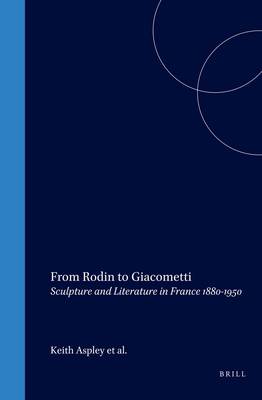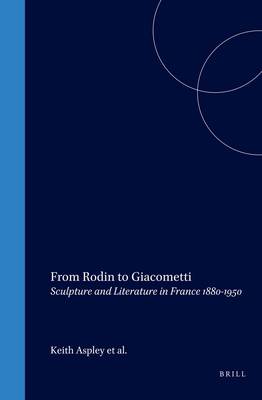
- Afhalen na 1 uur in een winkel met voorraad
- Gratis thuislevering in België vanaf € 30
- Ruim aanbod met 7 miljoen producten
- Afhalen na 1 uur in een winkel met voorraad
- Gratis thuislevering in België vanaf € 30
- Ruim aanbod met 7 miljoen producten
Zoeken
From Rodin to Giacometti
Sculpture and Literature in France 1880-1950
€ 180,45
+ 360 punten
Omschrijving
This book is a collection of papers delivered at an international conference in September 1996 at the Scottish National Gallery of Modern Art during a major Giacometti retrospective. The contributors are leading curators, art historians and literature specialists. While the relationship between nineteenth- and twentieth-century painters and writers has been the subject of intense interest in recent years, the parallel relationship between sculptors and writers has been largely neglected. These essays seek to redress the balance by looking at a variety of ways in which the conventional barriers between writing and sculpting were broken down by such pioneering figures as Rodin, Degas, Bourdelle, Valéry, Apollinaire, Reverdy, Breton, Bataille, Arp, Picasso and Giacometti. Among the topics discussed are: the many personal and professional contacts, dual artistic talent, 'Ecrits d'artistes', ekphrasis, sculpture as object, the sculptorly representation of the poet, the poetic representation of the sculptor, sculpture as metaphor, proprioception and mental images. Fully illustrated throughout, this book offers new perspectives on familiar masterpieces like Rodin's Gates of Hell, but also opens up less well known subjects like Valéry's sculpture and Breton's Object-Poems. Above all it makes a provocative and original contribution to Word and Image studies.
Specificaties
Betrokkenen
- Uitgeverij:
Inhoud
- Aantal bladzijden:
- 292
- Taal:
- Engels
- Reeks:
- Reeksnummer:
- nr. 21
Eigenschappen
- Productcode (EAN):
- 9789042004832
- Verschijningsdatum:
- 1/01/2000
- Uitvoering:
- Hardcover
- Formaat:
- Genaaid
- Afmetingen:
- 155 mm x 235 mm
- Gewicht:
- 648 g

Alleen bij Standaard Boekhandel
+ 360 punten op je klantenkaart van Standaard Boekhandel
Beoordelingen
We publiceren alleen reviews die voldoen aan de voorwaarden voor reviews. Bekijk onze voorwaarden voor reviews.










